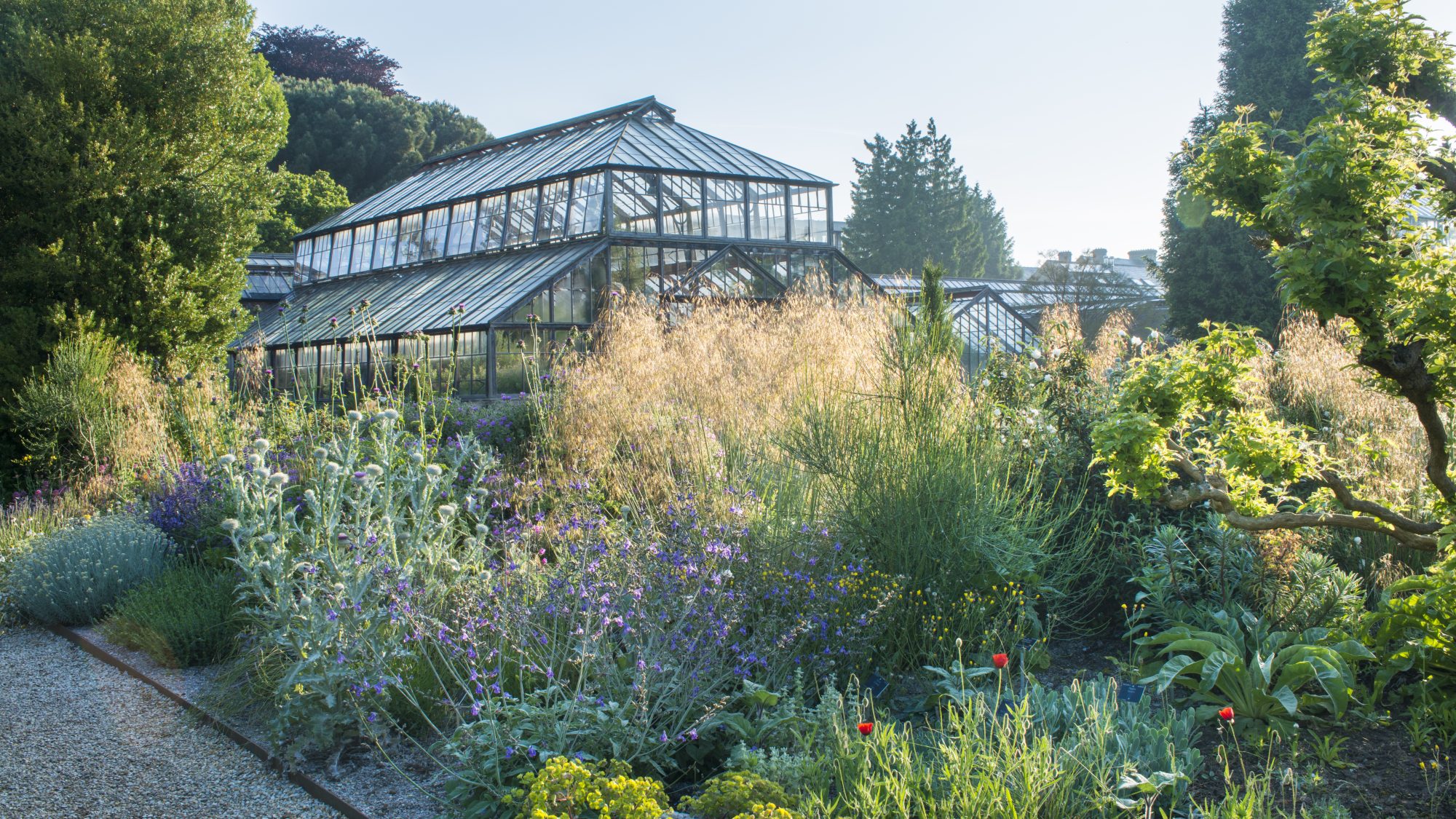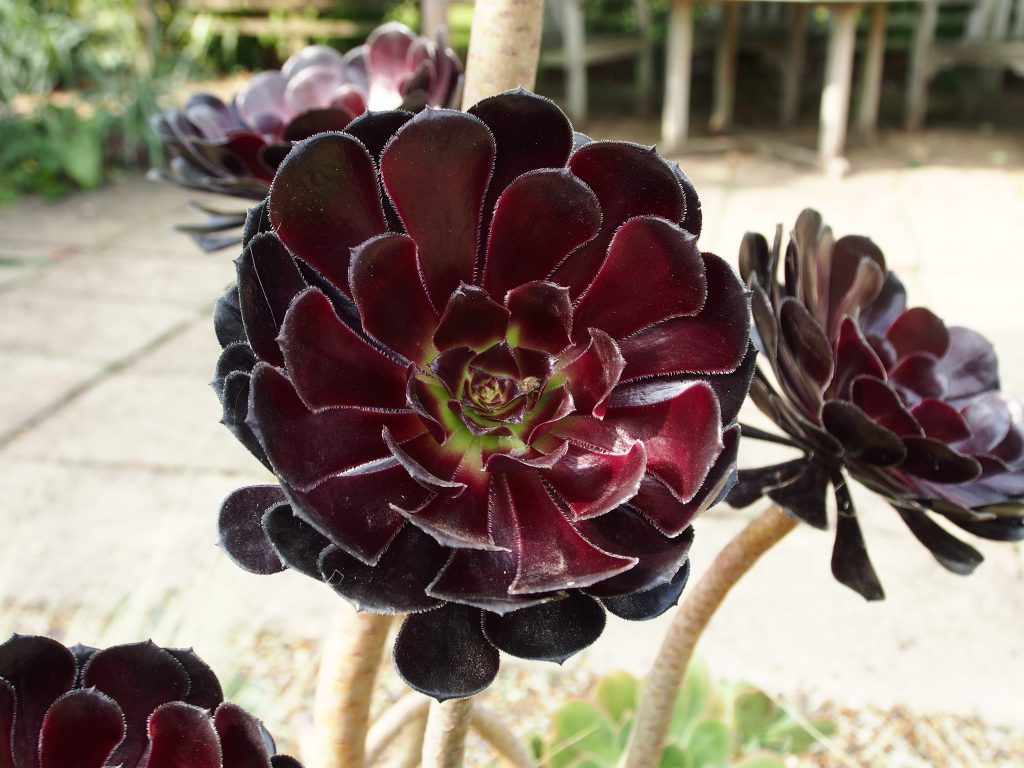Head of Horticulture, Sally Petitt, writes:
As gardeners, we can find horticultural inspiration in many places, including our holidays, whether near or far. Often, the ideas we bring home are not so much about a complete overhaul of our garden, but about adding a touch of the exotic in our own plots – a gentle reminder of happy, carefree days away from the everyday. I know I’ve found inspiration for both my own garden and the Botanic Garden while on holiday in a variety of locations, ranging from clifftop plantings of southern Italy to alpine meadows of Switzerland, and the gardens of Provence. Inspiration also comes from closer to home. The introduction to my own garden of Alexanders (Smyrnium olusatrum), a plant admired on holidays in Suffolk, has enabled me to enjoy its lime-green umbels in the comfort of my own garden, while reminiscing about happy holidays on the east coast.

What plants will thrive in Cambridge?
Many of us glean ideas for our gardens from trips in the UK. Cornwall is a mecca for garden-lovers who can revel in the lush growth of plants such as tree ferns (Dicksonia antarctica). While this species relishes the mild, damp Cornish weather, it is not so well-suited to conditions here in Cambridge. But there are a host of plants to be seen in Cornwall which may be much better suited to cultivation here in East Anglia. Exotic species such as the cabbage palm, Cordyline australis, the Chusan palm (Trachycarpus fortunei), agapanthus, red valerian (Centranthus ruber), Fuchsia ‘Hawkshead’, Aeonium arboreum ‘Schwartkop’ are all non-native species which thrive in Cornwall, and which grow well here at the Botanic Garden where they benefit from our low rainfall, mild winters, well-drained soils and a south-facing aspect. But given an exposed site, with wet, cold winters and they are almost certainly destined to fail.
If you travel further afield, the Mediterranean may inspire you to recreate an enclosed terrace, and while you may not be able to clothe your garden walls with Bougainvillea or Plumbago auriculata these can substituted with plants such as passionflower (Passiflora caerulea), jasmine (Jasminum officinale) or, on a sheltered, sunny wall, the beautifully scented star jasmine (Trachelospermum jasminoides). Add to this a few wall planters of trailing pelargonium and you will have an instant hit of the Mediterranean in your own back garden! Simply adding a few plants of lavender (Lavandula ‘Grosso’) and cotton lavender (Santolina chamaecyparissus), which provide structure, scent and flower, may instantly transport you back to that favourite garden in Provence. One of my favourite plantings here at the Botanic Garden are our Mediterranean Beds, which include species only from this region. The planting includes a broad sweep of plants from across the Mediterranean, such as cupid’s dart (Catananche caerulea), white-leaved rock rose (Cistus albidus) and white asphodel (Asphodelus albidus) which may not grow together naturally, but which combined here in a naturalistic planting give the impression of the Mediterranean landscape, especially when bathed in sun and heat.
Adding the plants to your garden
You may not be able to replicate a whole landscape in your own garden, but growing just one plant you have seen on your travels can serve as a happy reminder of trips to distant lands. Or you may want to emulate a garden style where you need to substitute those plants which thrive in warmer climes with those which favour your own conditions. Either way, you can introduce elements which serve all year to remind you of a favourite holiday destination. I know I can’t replicate an entire alpine meadow but I can try a few species from this habitat, such as moss campion (Silene acaulis) or alpine pasque flower (Pulsatilla alpina), in an alpine trough to bring a touch of Switzerland to my garden.
If you do fancy adding a horticultural taste of your travels to you own garden it’s worth remembering the old gardening adage of ‘right plant, right place’. So take time to check what conditions your chosen plant will flourish in – whether it needs full sun, free-draining soil, or protection from frost – so it can thrive, not just survive and then sit back, soak up the sights and scents and let your garden be a lovely reminder of the places that inspire you the most.

Getting started with holiday inspiration
- Plants such as Aeonium arboreum ‘Schwarzkop’ thrives in a sunny position in full sun and may need overwintering in a greenhouse or your house.
- Substitute an exotic, tender species such as Bougainvillea with a hardy alternative with the same habit.
- Many plants from holiday hotspots, including the Cornish coast and the Mediterranean, grow in well-drained soils, so add grit to poorly-drained soils to help plants such as lavender or rock roses flourish.
- Do your homework and check what conditions a plant requires before purchase to ensure it has the best chance of survival.
Gardening jobs for August
- Deadhead flowering plants frequently to encourage flowering.
- Collect seeds of annuals and biennials when the seed pods are ripe and dry.
- Prune lavender once the flowers have faded to form neat domes.
- Take softwood cuttings of tender perennials such as pelargoniums, salvias and penstemons.
- Keep watering – but ensure that water is at the roots of the plant where it is needed.
This piece was originally written for Cambridge Edition magazine.







